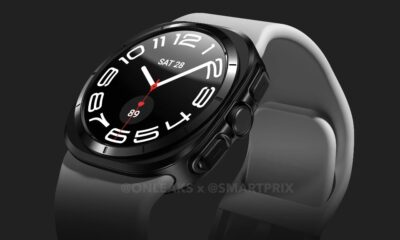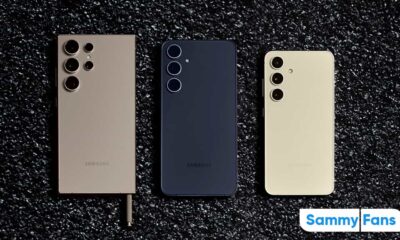News
Samsung supports Verizon deliver 5G in the US, 10,000 vRAN sites deployed
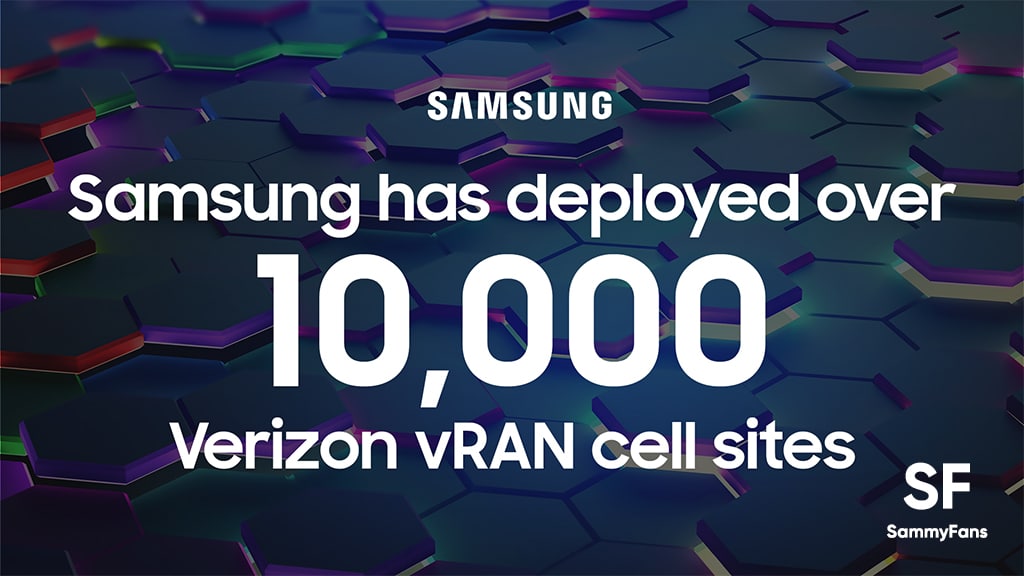
Three months ago, Verizon announced that it has reached the milestone of deploying 8,000 5G vRAN cell sites. Now, Samsung officially announced that Verizon has deployed over 10,000 5G vRAN sites in the US and plans to reach 20,000 sites by 2025.
To deliver faster 5G services in the US, Samsung is supporting Verizon with its high-profile vRAN. The company praises the carrier for being a trailblazer and leader in using virtualized radio access network in its mobile network. Using vRANs, Verizon is rapidly delivering 5G services to more and more users in the US.
Follow Sammy Fans on Google News
Samsung’s vRAN enables the US network carrier to manage its network flexibly, scale more efficiently and save OpEx with intelligent automation. The company is proud to support Verizon’s journey toward an all-virtualized network.
Join Sammy Fans on Telegram

Samsung vRAN
It’s worth mentioning that Samsung’s vRAN is cloud-native, 100% virtualized, and uses standardized interfaces, performing better than traditional hardware-bound RANs. The new vRAN is O-RAN compliant, which is able to run 2G, 4G, and 5G networks, and is capable of operating 4G and 5G simultaneously.
vRAN allows operators to perform network functions and deliver services that were not possible, or at least not as easy, with a traditional RAN. Mobile Network Operators (MNOs) can automate network tasks far more quickly and efficiently than in the past.
News
Will Samsung launch Slim variants of Galaxy Z Flip 6, Z Fold 6?

Samsung might launch Galaxy Z Flip 6 Slim and Galaxy Z Fold 6 Slip GalaxyClub reports. While the company is marching towards its July Unpacked, rumors about new Slim models are surfacing now.
RossYoung hints that Samsung might introduce a Galaxy Z Fold 6 Slim. It could have a larger display than the regular phone and lack S Pen support. This variant could hit the market later this year in the fourth quarter.
The Z Fold 6 Slim is model-numbered Q6 Slim, while there’s also a B6 Slim. B6 is the model number of the upcoming Z Flip 6, with Slim also expected. These rumors point out that the affordable foldables might be Slim.
Hearing about a Samsung Fold 6 Slim, Q4'24, bigger display than the Fold 6. Price probably similar to the Fold 6. No pen input.
— Ross Young (@DSCCRoss) May 23, 2024
At present, we don’t have any idea of the specifications of the Slim foldables. Earlier, it was reported that Samsung was heavily shocked by the reduced thickness of foldable phones released by Chinese vendors specifically Huawei.
It looks like the Korean tech giant has decided to trim some key specs in order to make foldables thinner. Those who want pro-grade specs would have option to go for strategic models, while Slim variants would extend the choice.
News
Samsung struggles in Nvidia HBM test: Reuters
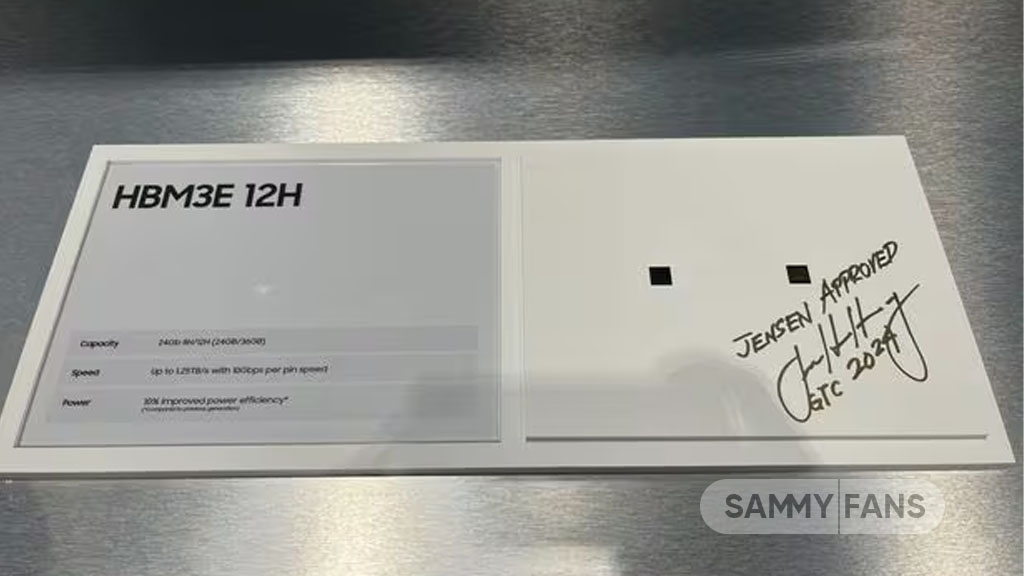
Samsung is facing difficulties in passing the Nvidia HBM test Reuters reports. The report says that Samsung has not yet passed Nvidia’s tests for high-bandwidth memory. Issues with heat and power consumption are reportedly the major reasons.
Since last year, Samsung has been facing issues passing Nvidia HBM tests for HBM3 and HBM3E. Meanwhile, the South Korean tech giant responded (via Reuters), “The testing is still ongoing, and final results have not been determined.”
Last month, Nvidia failed Samsung’s 8-stack and 12-stack HBM3E chips. However, the testing is still running and the company may get more chances to get its chips passed. In case the company fails to pass the HBM test, it will lag behind its competitor SK Hynix.
HBM is a key player in the booming popularity of artificial intelligence. This semiconductor stacks DRAM layers to dramatically increase data capacity and processing speed. Currently, SK Hynix and Samsung Electronics have been sharing the market.
Analysts also say that SK Hynix, which developed the first HBM chip in 2013, has spent far more time and resources on HBM research and development than Samsung over the past decade, accounting for its technological edge.
News
iFixit ends Samsung collab, Repair Hub to shut next month
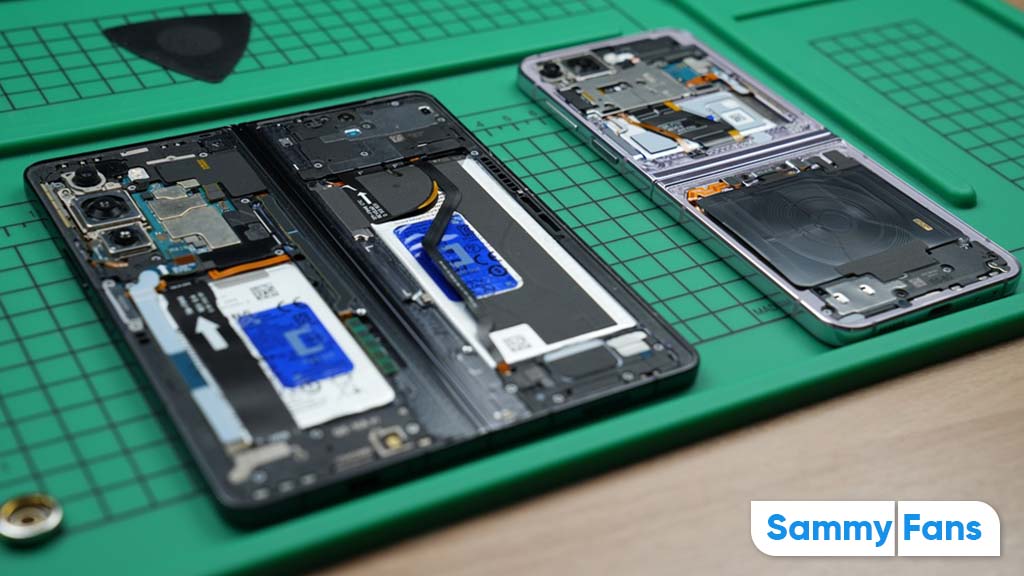
iFixit made a surprising announcement, breaking its repair ties with Samsung next month. The company says that a number of reasons are behind the termination of this collaboration. Two years after servicing Galaxies, iFixit will stop selling original spare parts next month.
Samsung allegedly creates problems for independent repair services. Consumers purchasing original spare parts from Samsung are required to submit their name, contact details, home address, IMEI number, and defect details for every repair carried out.
“It’s with a heavy wrench that we have decided to end our partnership with Samsung. Despite a huge amount of effort, Samsung’s approach to repairability does not align with our mission,” iFixit reports.
The Galaxy maker also requires repair service providers to purchase spare parts in large quantities. Service providers stay away from hefty purchases as Galaxy phones are often designed in such a way that spare parts have to be sold as a glued unit with several components.
Changes taking place starting June 1st, 2024:
- Starting June 2024, iFixit will no longer be Samsung’s designated third-party parts and tools distributor.
- iFixit will no longer have a quantity limit of seven Samsung parts per repair shop per quarter.
- No existing information will be removed from iFixit, but it will not collaborate directly with Samsung to develop new manuals.
- iFixit will continue to sell parts and repair fix kits for Samsung devices, sourcing OEM parts when available and clearly indicating whether parts are original or aftermarket.









